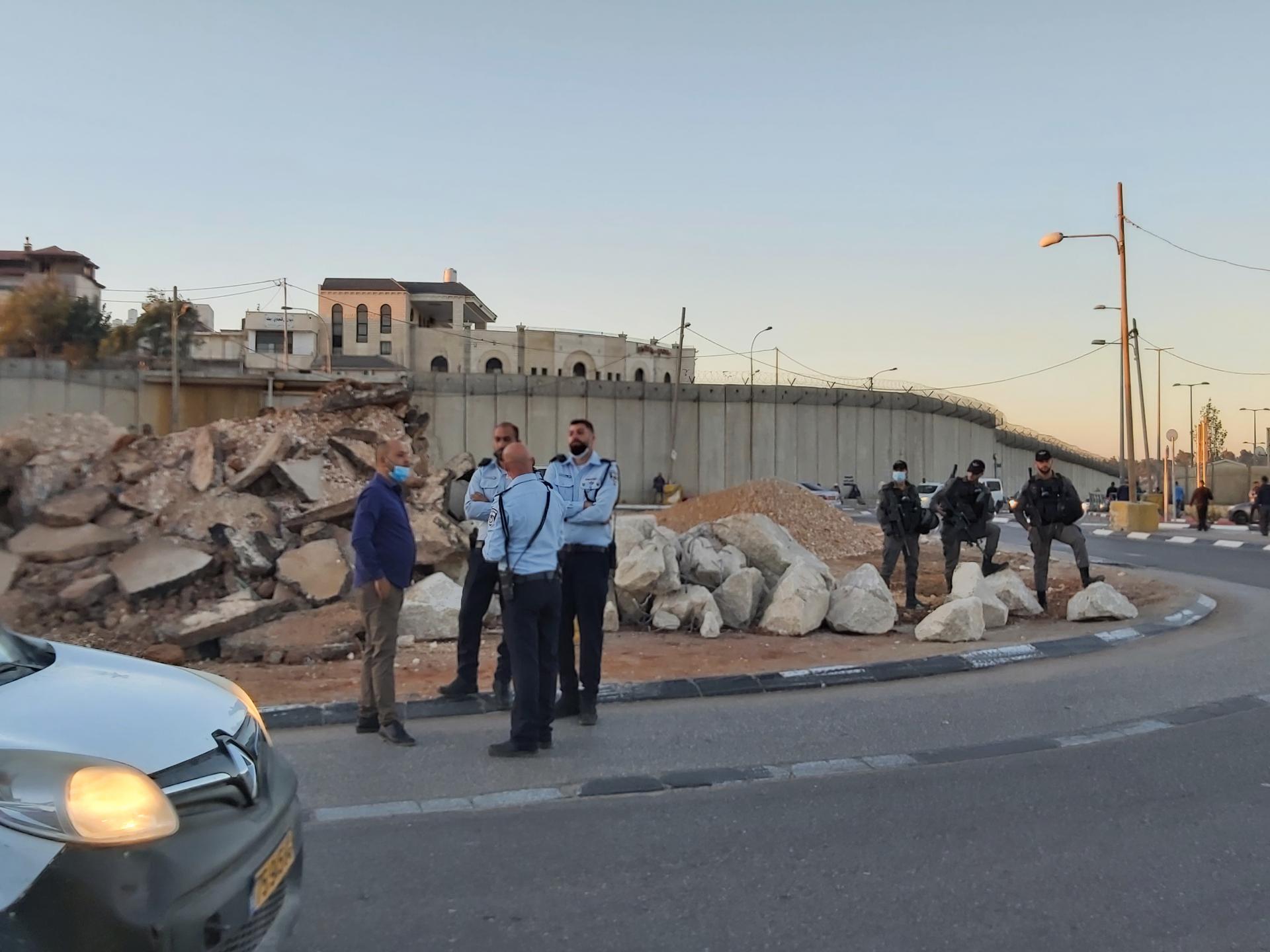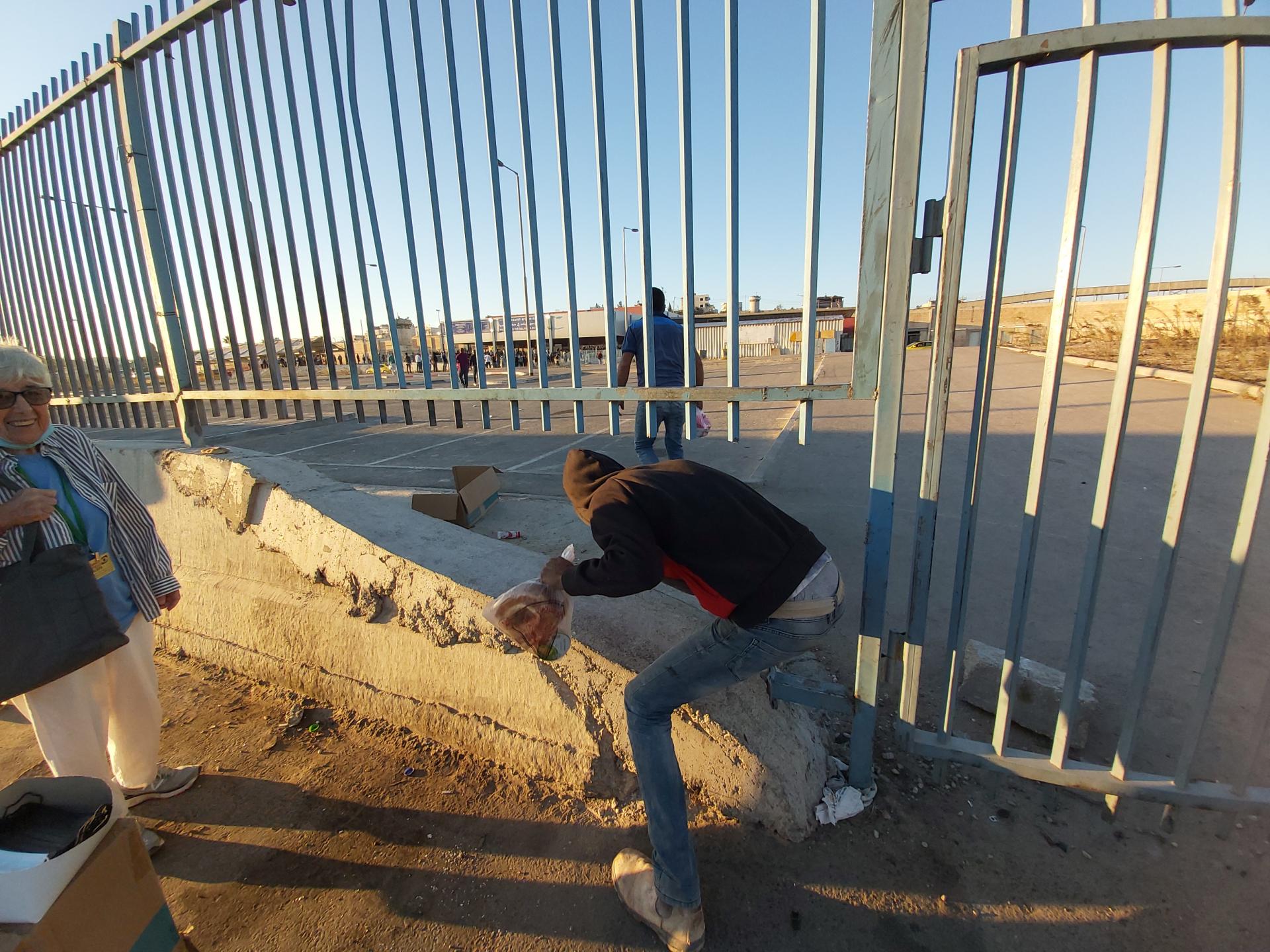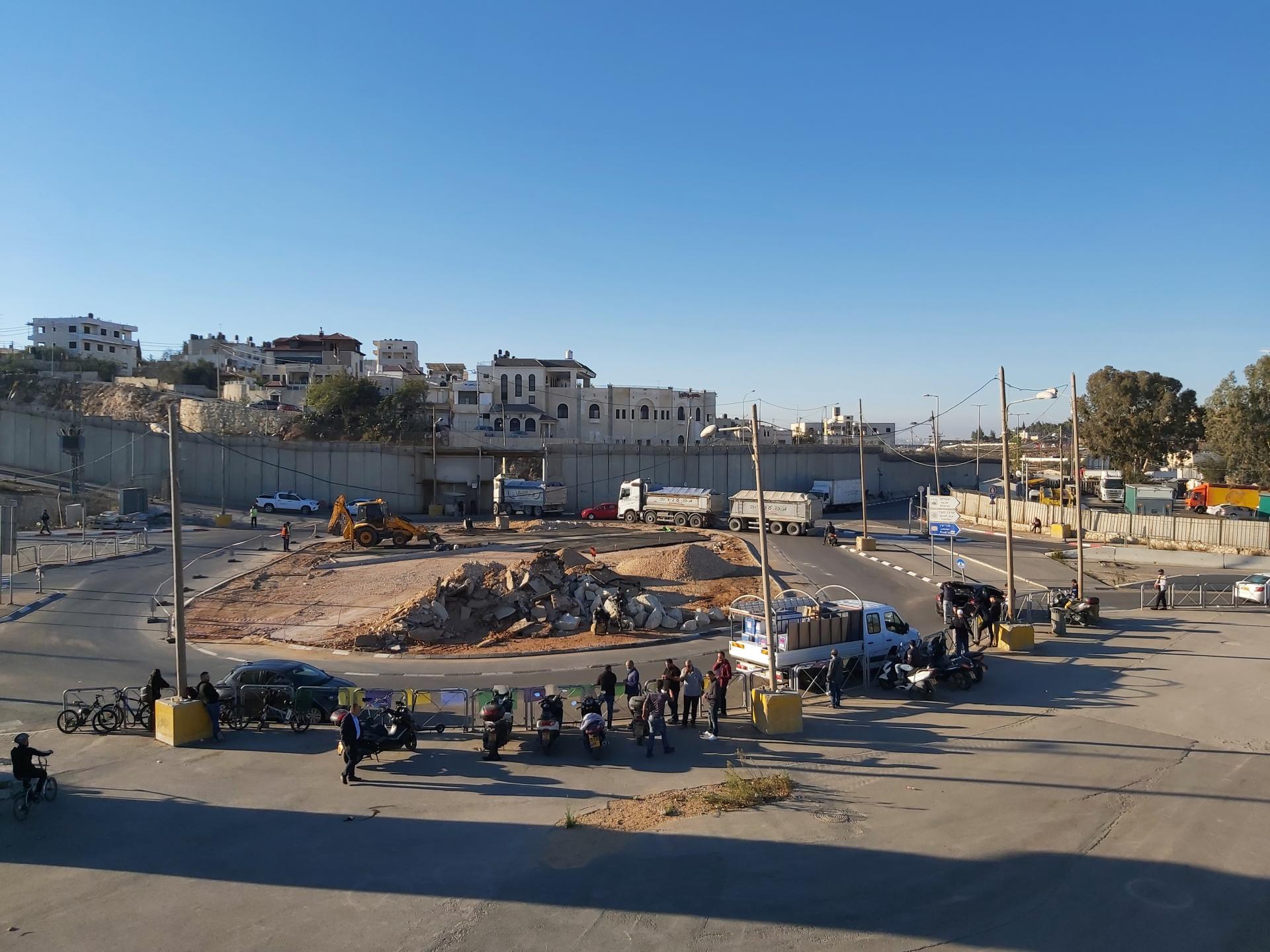Qalandiya - a demonstration by the residents of Kafr Aqeb
As we approached Qalandiya we noticed the unusual activity and relatively many police and border police. We had to search for parking and then saw there was a demonstration in the square.
Other people were behaving normally, and along the wall, many people were waiting as usual for transport to work.
We drove towards the square (which is destroyed by works being done in the area) and then saw that the demonstration was by residents of Kafr Aqeb who have to cross the checkpoint daily, whether on foot or in cars. Services provided to them by the Municipality are poorer than others (even east Jerusalem) although they also pay city rates. They also suffer having to waste hours at the checkpoint (many have yellow Israeli license plates) and this situation is likely to worsen as the building work in the area progresses.
The demonstration was quiet, men standing behind the fence holding handwritten posters in Hebrew and Arabic. An elderly man in a yellow vest and holding a walking stick introduced himself as a former head of town and said he had been in contact with our members when they organized tours which included Kafr Aqeb. It was clear that a few policemen were familiar with him and they stood around casually, luckily.
The demonstrators chatted with us and were pleased that someone was paying attention to them. Unfortunately, it is hard to believe there will be any improvement soon, certainly not in the traffic situation.
By the time we reached the Palestinian side, it was already 7 o' clock. Our friend Abu Ramzi had already left. The new falafel stall was still open and now sells more products (e.g. fried cauliflower).
From there we walked towards Qalandiya camp to show our visitor the conditions on the other side and the graffiti on that side of the wall. Some of the pictures are badly damaged through violent demonstrations in the past, but you can still make out Arafat's face. The traffic jams were enormous in all directions. When we reached a spot near the traffic checkpoint, where we could cross the road, we saw something new: As you may remember, there has been a fence surrounding the plot that had been a large parking lot in front of the checkpoint. For at least a year the gate to this area has been locked for some unknown reason and people have had to walk all the way round to reach the checkpoint. Today we discovered that someone with initiative has simply sawn part of the fence to create a space to pass through by bending. We managed to do so without difficulty! [Necessity the mother of invention?}
While we were on our tour long lines had formed outside the checkpoint itself. It was unclear why. We noticed that people were on the bridge, walking westward, so the checkpoint was obviously working. By the time we returned there, 15 minutes later, there were no long queues.
We explained to our visitor the rules for passing in vehicles and the danger of approaching the vehicle crossing as a pedestrian,
We returned to the checkpoint. There are three entrances, each leading to a 'slalom' (winding passage) which opens via a turnstile into a waiting room. Then there is a turnstile to the two package-checking machines. This turnstile was allowing 5 people through at a time. They would be checked and only then another turnstile would open which would finally let them through to the hall for document-checking and exit. This final check is done electronically, provided one has a magnetic card. If you do not have a permit. you pass a personal check. This is what we do with our blue I.D. cards (and our visitor with her visa), and also Kafr Aqeb residents who also hold blue cards as residents. Children, too, are in this class. Because they do not yet have I.D. cards, they present their Israeli birth certificates.
We chose the middle entrance because usually you can see from there the conditions in the other areas. But today doors were closed between the three areas, and in ours only one checking machine was open and that closed for a while, and so a crowd developed with some confusion and some young folk tried jumping line.. Some people despaired and went out again – presumably to try another entrance? We tried to keep a distance (though most people were wearing masks at this stage).
When we reached the carousel the three of us were separated but the woman soldier operating it obviously noticed us as a group and opened it so we could join one another. The soldier then called and it turned out she was calling a young woman in the previous 'five' because she was not wearing a mask. Ronit gave her a spare one and we waited for her to put it on. It was interesting to see that she had an extension thread so as to fit the mask over her hijab. Once she had her mask tied the soldier opened the turnstile for all of us to go to the final document-checking stations.
People passing electronically went through without any delay. We had quite a long line which included schoolchildren, There was a boy of 16 who showed his blue card, but it looked as if the child with him passed without showing anything at all. Perhaps he is someone they already know. Often veteran staff are familiar with the 'regulars.'
It was almost 8 when we exited. From the bridge we saw that the demonstration was almost over and the police and border police were no longer standing in the square. The policemen were now standing on the side close to the pedestrian checkpoint and were not showing interest in the demonstrators, simply waiting for them to leave.
We saw also from the bridge that the square is now totally destroyed and a machine working presumably to clear it away altogether. We saw also that the gate in the wall was open. Apparently to allow through trucks for the building site – but some ordinary cars used the opportunity to pass, too…
When we returned to our car we drove around the square and saw that the demonstrators had already left. The posters were thrown in trashcans. Does this mean that the demonstration was a one-time affair?





